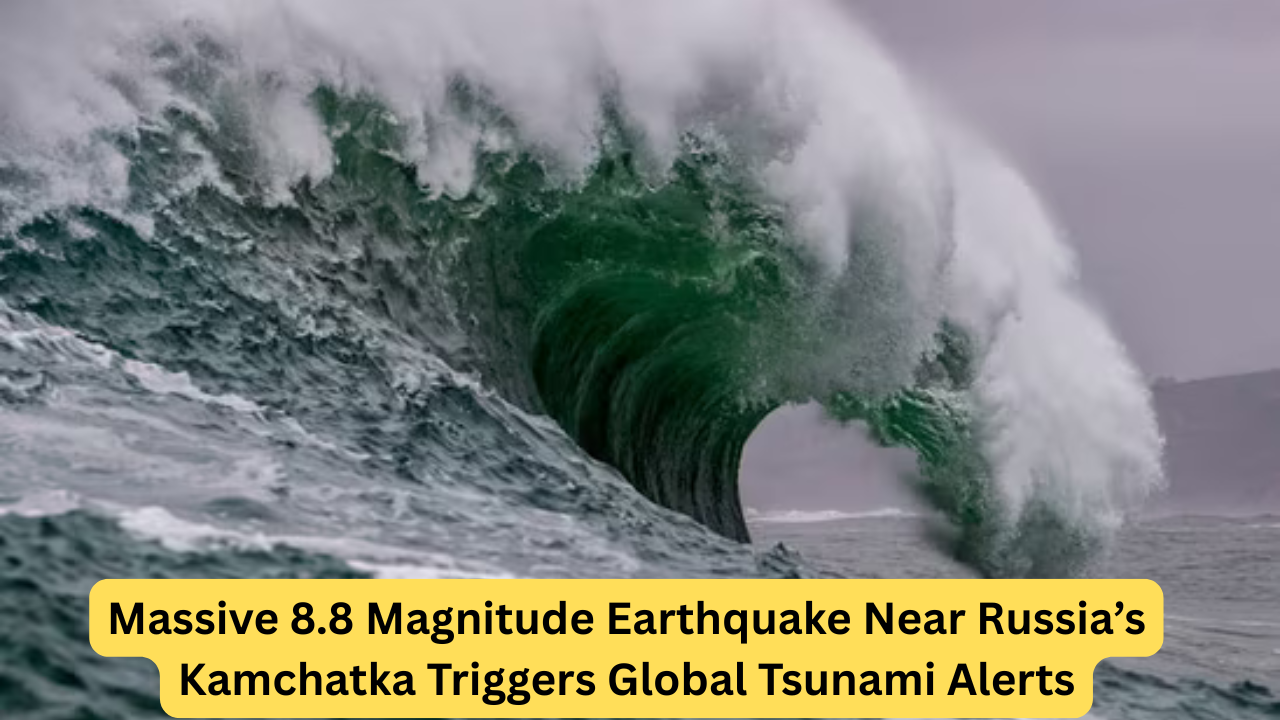A powerful undersea earthquake measuring 8.8 on the Richter scale struck off Russia’s eastern Kamchatka Peninsula on Tuesday, triggering a wave of tsunami alerts across the Pacific Rim, including parts of Asia, North America, and South America.
According to the United States Geological Survey (USGS), the epicenter of the quake was located approximately 136 kilometers (84 miles) east of Petropavlovsk-Kamchatsky, a coastal city situated in Russia’s Far East. The tremor, categorized as a megathrust earthquake, occurred deep under the ocean floor, raising serious concerns about the possibility of large and destructive waves.

Global Tsunami Warnings and Evacuations
In response to the quake, tsunami alerts were promptly issued across multiple countries and territories bordering the Pacific Ocean. Regions currently under watch or advisory include:
- Japan: The Japan Meteorological Agency issued tsunami advisories for its eastern coastline, cautioning about potential waves reaching up to 3 meters (9.8 feet) in height.
- Taiwan, the Philippines, and Indonesia: National disaster agencies have issued warnings and are urging residents in low-lying areas to evacuate as a precaution.
- Hawaii and the Aleutian Islands (Alaska): Hawaii Governor Josh Green called on residents to follow evacuation protocols and remain calm.
- United States West Coast: A tsunami advisory has been extended to California, Oregon, and Washington.
- Guam and Pacific Islands: Territories such as Guam, Peru, and the Galapagos Islands are also under advisory or monitoring status.
Political Leaders Respond
As authorities scramble to assess the potential impact of the tsunami waves, U.S. President Donald Trump urged Americans living in coastal regions to stay vigilant and follow official guidance. Meanwhile, local officials in the affected countries are coordinating emergency preparedness plans, mobilizing rescue teams, and ensuring smooth evacuations from vulnerable coastal zones.
Though the full extent of damage from the earthquake is yet to be determined, early reports suggest that seismic activity was felt over a wide region, causing panic and temporary disruptions in communication lines.
Safety Measures and Ongoing Monitoring
International seismic and oceanographic agencies, including the Pacific Tsunami Warning Center (PTWC), are actively monitoring the situation. Updates are being released in real-time as data comes in regarding wave heights, sea-level changes, and potential landfall times.
Residents in affected areas are strongly advised to:
- Stay away from beaches and coastal zones
- Monitor local news and official government alerts
- Prepare emergency kits and be ready to evacuate if needed
